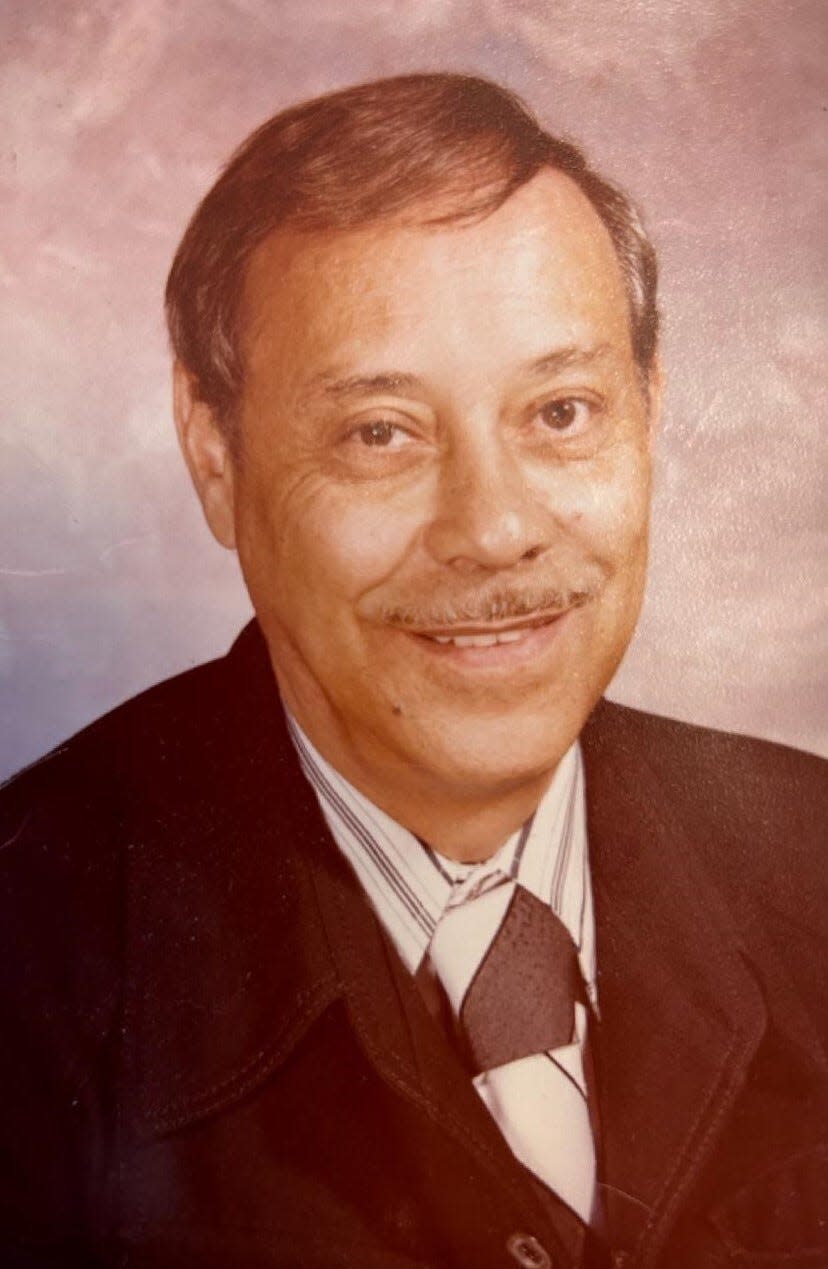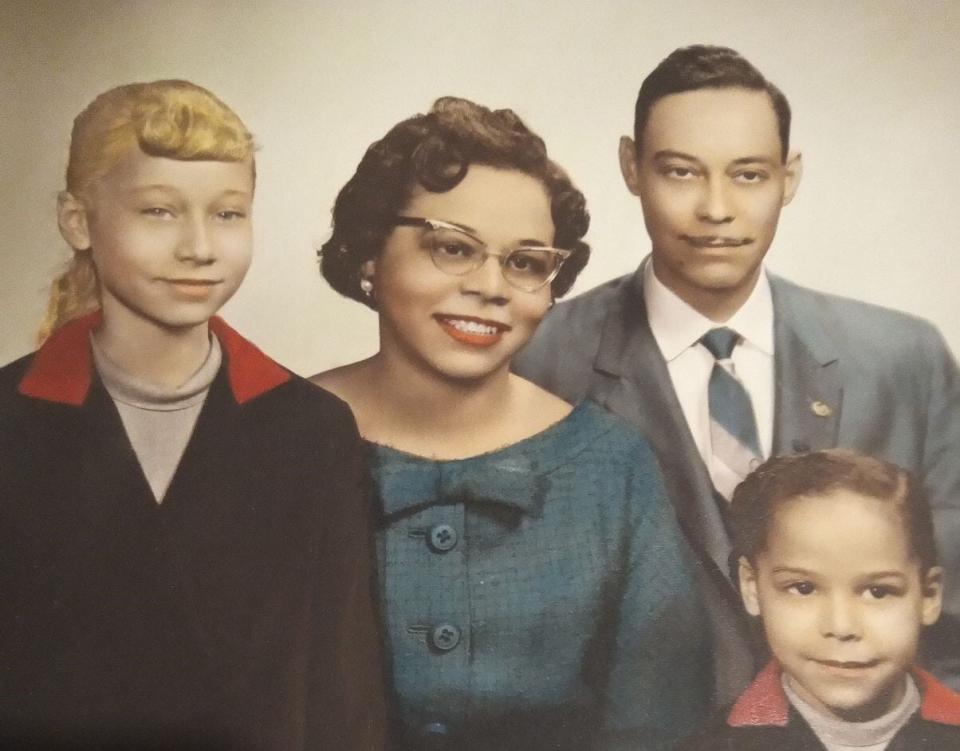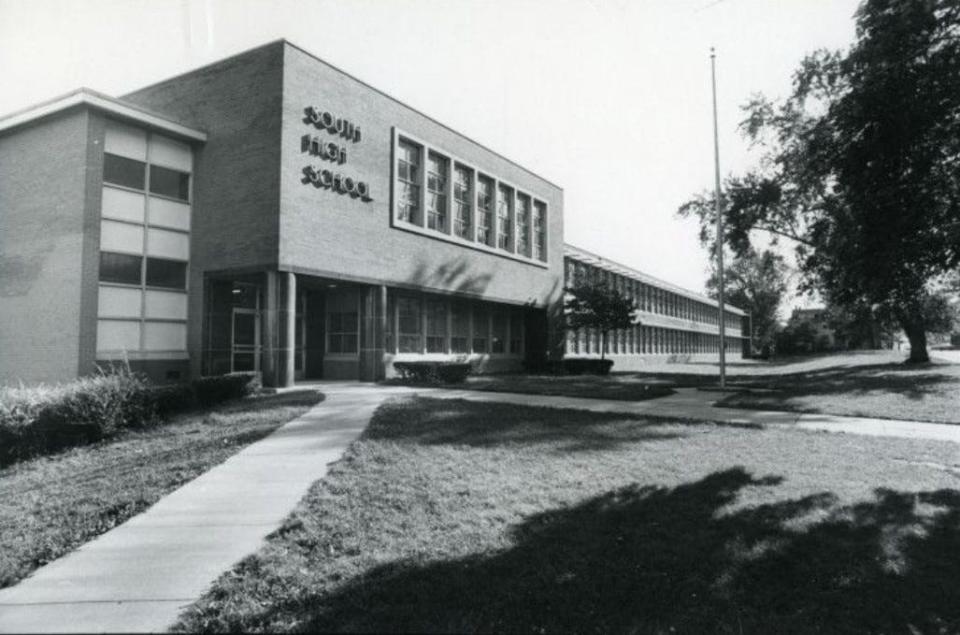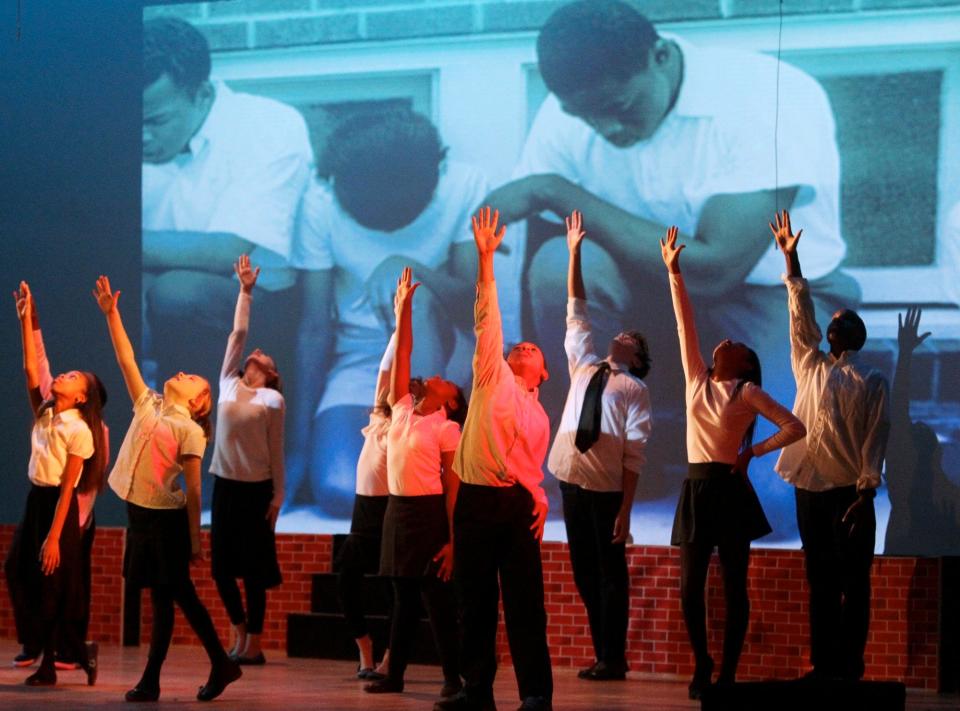Local history: Educator George C. Miller, first Black principal in Akron, leaves legacy
Akron educator George C. Miller had a simple philosophy in teaching:
“You try to achieve one small success with a child and you build from there to the next small success.”
Miller did a lot of building in Akron. In fact, there’s a building that bears his name: Miller South School for the Visual and Performing Arts.

He made history as the first Black principal in Akron Public Schools while touching countless lives as a teacher, counselor, director and mentor — not to mention husband and father.
“He left a legacy for sure,” said daughter Marilyn Miller Paulk of Akron. “He was an inspiration to a lot of people.”
“I’m just proud that he was our father,” said daughter Carol Miller of Akron. “He showed us a lot of love and what family’s about.”
George Charles Miller, the son of George and Nellie Miller, was born Feb. 23, 1921, at 366 N. Howard St. in the home of his grandparents Charles and Ella Miller. He grew up with his sisters Daisy Mae and Lottie Mae, attended Bryan School and Jennings Junior High School, and graduated in 1938 from North High School, where he studied Latin for four years.
He briefly attended the University of Akron, worked for a short time as a porter and landed a job at Goodyear Aircraft. Then Uncle Sam came calling.
Miller was drafted into the U.S. Army in November 1942, trained at Camp Rucker, Alabama, and served in New Guinea and the Philippines during World War II.
Afterward, he came home and worked at Firestone. With the aid of the G.I. Bill, Miller returned to UA, where he studied education and became a founding member of Kappa Alpha Psi fraternity.
“I really wasn’t prepared for anything but going to college,” he told the Beacon Journal years later.
In 1948, he married secretary Dorris Williams, a graduate of Garfield High School and Hammel Business College.
Education career in Akron
After Miller earned a bachelor of science degree in 1951, the Akron Board of Education hired him to teach at Robinson School. It wasn’t about the money.
“It was only $2,400 a year and I had been making maybe $3,600 in Firestone production,” he said.
Miller enriched the lives of students. He believed that all children had the ability to learn. It was just up to teachers to find a way to reach them. One small success led to the next small success.

Miller and his wife welcomed daughters Marilyn and Carol in the 1950s. The family moved from Lovers Lane to Rhodes Avenue to Packard Avenue, moving twice as highway construction and urban renewal took their homes.
“He was very family oriented,” Paulk recalled. “We would take family drives on Sundays and go visit relatives. He always thought that was important.”
George and Dorris Miller took their daughters to the theater, opera and symphony, allowing them to experience the finer things in life.
“They wanted to introduce us to culture,” she said.
Miller sent Marilyn and Carol to Our Lady of the Elms because he didn’t want anyone in the public school system — administrators, teachers or students — to treat his daughters differently because their father was an educator.
“He wanted to make sure that we were our own people and that we didn’t get ahead because of him and we weren’t hurt because of him,” Paulk said.
Lessons continued at home. Miller made sure that his girls did the best they could in school.
“He would go over our homework with us and anything we didn’t understand, he’d tutor us on that,” Carol Miller said.
Principal at Lane School
George C. Miller earned his master’s degree in education at UA and worked as a counselor at Goodrich and Thornton junior highs before being named principal at Lane School in 1962, the first African American to hold the title in the Akron district.
“When we had days off at the Catholic schools, he would take me with him to work,” Carol recalled.
She would sit in the principal’s office with the secretary or join the kids in the cafeteria for movies at lunch. Her father was busy achieving one small success at a time.
“I used to think he spent more time with the other kids than us,” Carol said. “But now I see what he was doing. He was community involved.”
Miller was active with the Akron Community Service Center and Urban League for over 30 years, providing free tutoring and helping students achieve breakthroughs in learning. Director Vernon Odom once called Miller “the greatest teacher that’s ever been in the Akron school system.”
He could handle many subjects from English to history to calculus to Latin.
Paulk remembers how her father tutored adults for free at their home on Rhodes Avenue. Some people needed individual assistance and Miller was happy to provide a private setting. Over the years, he helped applicants prepare for the firefighter and police exams in Akron.
“I see people all the time, Black and white, who say: ‘Your dad helped me pass that,’ ” she said.

Miller transferred to Findley School to serve as principal in 1966. Three years later, the district named him director of a career skills center at South High School on East Avenue.
The program, financed with a federal grant, taught auto service, engine repair, commercial painting, welding and other trades. More than 200 juniors and seniors enrolled in the first year at South.
In 1972, Miller was promoted to director of supplemental services for Akron Public Schools, which made him responsible for planning and administering programs involving $5 million in federal and state aid. The district provided extra resources, books and attention to disadvantaged children. As a consequence, reading and math skills jumped in schools.
“The funds do make a difference,” Miller told the Beacon Journal in 1973. “We have a lot of average children. With that extra help, they can be above average.”
Akron lost a dedicated educator in 1983 when Miller retired after 32 years with the school district. Two months later, he passed away after a brief illness. He was 62.
“I never saw so many cars at a funeral,” Paulk said.
Teachers, administrators, students and others paid their respects to a man who had made such a difference. One small success at a time.
Origin of Miller South
His UA fraternity set up a memorial scholarship in Miller’s name and urged Akron Public Schools to establish a lasting tribute.
After South High School closed in 1980, the district turned the building at 1055 East Ave. into the South Education Center, a community school for adult and preschool programs.
In 1991, the Akron Board of Education dedicated the building as the George C. Miller South Education Center and welcomed his proud family at the ceremony.
“Oh, I was so touched,” Carol Miller said. “That was his baby.”

Within two years, the school transformed into Miller South School for the Visual and Performing Arts. It opened in 1993 with 279 students in fourth through eighth grade. The program allowed youths to develop their talents in visual art, dance, theater, singing and instrumental music.
The Akron educator was further memorialized in the 1990s with the naming of Millerview, an allotment of new homes at Lane and Howe streets.
“I get a little sentimental, I do,” Carol Miller said. “As a girl, you look up to your father and he’s always there. He’s the main one who’ll love you the best. That holds true.”
Over the decades, she and her sister have followed their father’s footsteps in different ways. Carol tutored kids and worked from 1988 to 2005 at Akron Summit Community Action as a computer program in Head Start.
“My father was a firm believer in education — something I tried to instill into my son and my grandson,” she said.
Marilyn Miller Paulk, a Beacon Journal reporter from 1986 to 2017, plans to write a book about her father. She wants today’s generation to know more about the Miller in Miller South.
When she was growing up, her dad often tried to talk her into a teaching career, but she always resisted. No way. That wasn’t for her.
Later in life, she ended up teaching at the University of Akron and Kent State, then became a substitute and mentor for students in sixth and seventh grades.
“I ended up teaching anyway,” she said. “So it went full circle. And I enjoyed it. It was like, ‘He was right.’ ”
One small success at a time.
Mark J. Price can be reached at mprice@thebeaconjournal.com
Local history: Akron educator Abbie Willacy gave students a Head Start
Local history: Remembering the Rev. Stanley E. Lynton, a respected Akron leader
This article originally appeared on Akron Beacon Journal: George C. Miller was first Black principal in Akron schools

